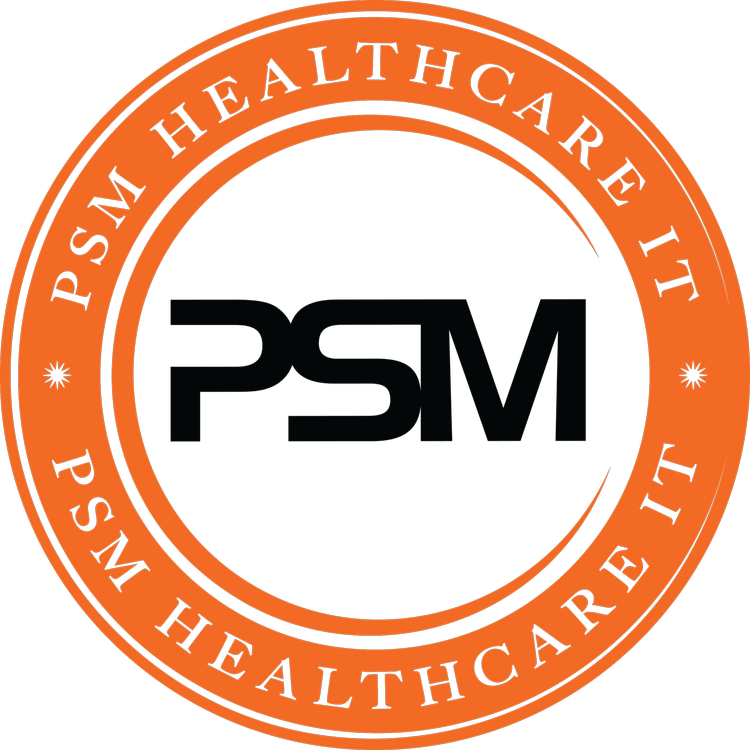Key Takeaways

-
Healthcare technology bridges the gap between technology and healthcare, allowing providers to save time, manage patient data efficiently, and improve communication between patients and providers. It’s hard to overstate its importance to improving quality and increasing access to care.
-
At San Jose, tech companies and healthcare providers partner to develop innovative, technology-driven solutions. This public-private partnership is having a direct impact on saving lives and increasing operational productivity.
-
The advantages of healthcare IT are many and include benefits like empowered patient engagement and decreased administrative burden. It improves data quality and increases patient safety via sophisticated technologies such as EHRs and telemedicine.
-
Ensuring compliance with HIPAA regulations and implementing robust cybersecurity measures are essential to protect sensitive patient information and maintain trust in healthcare IT systems.
-
Overcoming challenges in patient care requires addressing barriers to communication, improving data accessibility, and mitigating cybersecurity risks to ensure seamless and secure healthcare delivery.
-
Continuous staff training, adopting integrated IT solutions, and monitoring IT infrastructure are actionable steps healthcare providers can take to enhance efficiency and deliver better patient care.
San Jose health care IT is dedicated to applying the right innovations to bring superior care and efficiency to the industry. The incorporation of tech improves data control and accelerates communication. This increased efficiency enhances patient care on platforms such as electronic health records (EHR) and telemedicine.
San Jose’s position as the heart of tech innovation puts it at the forefront of innovation in data security, cloud-based solutions, and AI-based diagnostics. These innovations minimize mistakes, improve productivity and provide physicians with actionable information at the point of care.
Healthcare IT helps create personalized treatment plans, which saves time and money by analyzing patient data more efficiently. For right now, San Jose is definitely on the cutting edge of what’s to come in healthcare.
By doing so, the city is investing in new digital solutions while promoting collaboration between tech experts and medical professionals.
Understanding Healthcare IT
Healthcare IT includes all the technologies used to support healthcare and the healthcare system. It keeps track of patient data accurately and improves workflows. It has a crucial part in improving the quality of patient care and ensuring the health of the medical workforce with innovative tools and systems.
In San Jose, the tech ecosystem is living on borrowed time. Healthcare IT has a vital role in supporting the modernization of how care is delivered.
What is Healthcare IT
Healthcare IT systems are indispensable tools, including electronic health records (EHRs) and telemedicine solutions. These tools help providers comply with regulations to securely store, retrieve and share patient information.
These systems include any software application, hardware such as medical devices, and the networks that connect them all within a healthcare environment. High-end components, like the latest cybersecurity technology, are essential for protecting sensitive patient data.
Simultaneously, data management systems sort this information, allowing it to be cleanly and quickly accessed when needed. For instance, customized cloud solutions have proven effective in enabling smooth, ongoing operations, which help assure the speed and efficiency required to deliver care more quickly and effectively.
When implemented appropriately, these systems are HIPAA-compliant. They increase staff productivity by reducing wait times and improving patient engagement by almost half.
Why Healthcare IT Matters in San Jose
The tech innovation that is radically changing San Jose’s landscape directly benefits the city’s healthcare IT infrastructure. Regional providers partner with technology companies to create customized solutions.
They place an emphasis on customized radiology IT support to address the specific needs of their distinct geographic area. These innovations not only help expand access to high-quality care, but they keep them running efficiently.
More than 70% of healthcare organizations are looking at artificial intelligence. Ultimately, the future of healthcare IT in San Jose will bring us more informed diagnoses and treatments tailored specifically for us.
Digital health tools, such as telehealth and remote patient monitoring, are further streamlining the patient experience by reducing burden and increasing communication between patients and their providers.
Benefits of Healthcare IT
Healthcare IT is arguably the most transformative aspect of today’s healthcare ecosystem, combining cutting-edge technology with patient care and organizational processes. It’s not a bad thing after all – it brings real benefits like improving patient engagement, streamlining workflows, and increasing data accuracy. Each of these features improves efficiency and helps provide better patient care.
That’s particularly true in a bay like San Jose, where innovative ideas are able to thrive.
Improve Patient Care Quality
Electronic health records (EHRs) play a critical role in facilitating continuity of care. By keeping up-to-date and easily shareable patient records, EHRs give healthcare providers the tools to make the best decisions possible. Telehealth services, another cornerstone of healthcare IT, have increased access to care, bridging gaps in many underserved communities.
Patients in rural and underserved communities can now access specialty providers without traveling hours, erasing critical barriers of healthcare access. Advanced imaging technologies, facilitated by powerful IT systems, now provide sharper diagnostic tools. These improvements enhance diagnostic quality and aid targeted treatment development, leading to improved patient care and outcomes.
Streamline Operational Efficiency
Healthcare IT alleviates much of the administrative burden by automating menial tasks. For example, automating patient intake forms and billing processes frees up staff to spend more time on direct patient care. Integrated health information systems improve communication between departments, so that care teams can operate more collaboratively.
Smart scheduling and patient flow systems help eliminate wait time before and after appointments, making your clinic more efficient and improving the patient and staff experience. Facilities equipped with these tools have reported up to 70% increases in patient visits, underscoring their impact on operational efficiency.
Enhance Data Management and Security
Patient data security is the cornerstone of healthcare IT. Powerful cybersecurity solutions like data encryption and secure data transmission ensure that sensitive patient information is never compromised. Routine audits and extensive staff training help keep practices compliant with HIPAA regulations, drastically cutting down on risks related to data breaches.
Our San Jose Healthcare IT Support professionals always aim for the highest standards. We protect patient privacy while enabling sophisticated data analysis to drive better decision-making. Beyond preventing medication errors, these systems enable more precise reporting as well, which has a direct effect on patient safety and care quality.
Ensuring Compliance with Regulations
In San Jose’s fast-paced IT healthcare environment, ensuring compliance with regulations creates a solid foundation for successful, ethical, and secure operations. Following the Health Insurance Portability and Accountability Act (HIPAA) is not only the right thing to do—it’s the law. More importantly, it shows our commitment to safeguarding patient trust.
This section discusses the key aspects of ensuring compliance. It explores the dangers of failing to comply and stresses how ongoing education plays a critical role in ensuring high standards are maintained.
Understand HIPAA Requirements for IT Systems
HIPAA sets explicit guidelines for maintaining Protected Health Information (PHI) that prioritize confidentiality, integrity and availability. IT systems should incorporate encryption, access controls, and secure storage solutions to comply with these regulations.
For instance, encryption protects patient records by making confidential information indecipherable in the event of a breach or unauthorized access. Policies specifically designed around HIPAA requirements, such as allowing access to PHI only to those who need it, reinforce these protections.
Protecting PHI refers to stopping unintentional disclosures, as well as intentional violations. Not doing so exposes municipalities to potential fines of up to $250,000 per incident and potentially felony charges against municipal employees.
Implement Secure Data Practices
Staying in compliance means making secure data handling a part of everyday business. These include:
-
Regularly updating passwords and enabling two-factor authentication.
-
Conducting routine security audits to detect vulnerabilities early.
-
Training staff to ensure data is treated with care, cutting down the chance of human error.
For example, Caspian IT Group helps San Jose providers make the leap to new technologies by building secure practices directly into those technologies, facilitating a seamless transition.
Avoid Compliance Violations in San Jose
Approaches such as planning to provide evidence of compliance and keeping comprehensive written records are key. Proactive measures as AI tools like those used or planned by 70% of healthcare organizations keep organizations compliant by proactively identifying gaps.
San Jose’s healthcare IT teams, like ours, facilitate ongoing communication to keep systems updated and aligned with federal and local standards.
Overcoming Challenges in Patient Care
Healthcare in San Jose is changing quickly, and IT solutions are at the very heart of making it easier to provide the best possible patient care. Overcoming the communication barriers, technology gaps, and security risks is crucial to delivering seamless, convenient care. By acknowledging these challenges and considering appropriate solutions, healthcare providers can go a long way toward providing their patients the best possible care.
Address Barriers to Effective Communication
We know that clear communication between patients and providers is essential to delivering quality care. Intuitive, user-friendly patient portals make it easy for patients to engage, empowering them to schedule appointments, receive test results, and communicate seamlessly with care teams.
Telemedicine has proven invaluable, particularly in remote areas, by offering virtual consultations that reduce travel and waiting times by 78%. San Jose’s radiology IT support helps to give patients the power of choice. They engage with their providers 50% more through new digital mediums.
Training staff on these new communication technologies makes sure these tools provide the most advantages possible. Regional facilities, backed by 115 subspecialty-trained radiologists, have already proven to be way ahead on this front.
Resolve Data Accessibility Issues
Cloud computing and integrated systems are changing how data is accessed, making sure healthcare providers can access patient information in real-time. In San Jose, data management tools have improved internal decision-making processes allowing for quicker diagnoses and more informed care plans.
User-friendly interfaces make it easier for providers to quickly access the data needed, ensuring more efficient workflows and enhanced care delivery.
Mitigate Risks of Cyber Threats
Implement strong security measures and timely software updates. Train staff to identify phishing attempts and cyber risks. Establish comprehensive incident response plans.
San Jose Healthcare IT Support can help ensure you comply with HIPAA regulations, significantly reducing your risk.
Steps to Enhance Practice Efficiency
Fixing practice efficiency
San Jose healthcare IT needs a logical, methodical, and effective approach to improving practice efficiency. By harnessing the power of technology and promoting a culture of collaboration, healthcare providers can unlock the potential for streamlined operations and improved patient outcomes. Here are some specific steps to inform this process.
1. Adopt Integrated IT Solutions
Integrated IT solutions make it easier to share data and manage patients, resulting in enhanced efficiency. Electronic health record (EHR) systems are most effective when they’re integrated with lab databases and scheduling software. This interoperability is what will empower providers to have patient data at their fingertips in real time.
This reduces redundancies and further enables delivery of care in a cohesive fashion.
Real world results
In San Jose, clinics using integrated EHRs were able to reduce patient wait times by almost 80%. SMART goals, such as adopting a coordinated system within six months, provide clear and quantifiable accountability.
2. Train Staff on IT Systems
Staff training will help to ensure that innovations are used to their full potential. Integrated initiatives addressing system usage, data management, and how to navigate the new workflows will better equip staff for success.
Ongoing education, such as quarterly workshops, ensures teams are up to date with AI advancements, something 70% of healthcare organizations are implementing. Regularly scheduled communication and feedback circles further boost retention of new skills learned, enabling staff to provide high-quality care.
3. Optimize Workflow with Technology
Tech solutions like automated appointment reminders or inventory trackers take the busy work off their plate, giving practices more time. Continually reviewing your workflow will help you find where things are inefficient.
For instance, process mapping can identify bottlenecks in patient intake, such as a cumbersome registration process, allowing for targeted improvements. Phased rollouts and “quick wins” help create momentum for permanent changes to stick.
4. Monitor and Update IT Infrastructure
IT systems are complicated, and they need continuous monitoring to keep them from going awry. Consistent software updates eliminate downtime and help you stay compliant with industry standards.
Setting KPIs—such as system uptime or patient satisfaction scores—creates a way to measure effectiveness, and regular proactive maintenance keeps operations running smoothly. Sharing each other’s success stories encourages us all to make even greater strides.
Local Success Stories in San Jose
Now San Jose has emerged as a center of innovation in healthcare IT, proving that technology can create more efficient and effective healthcare systems. Local health care providers are working hand-in-hand with the region’s leading tech industry innovators. Collectively, they are spurring tangible progress in patient care and access.
Read on, as we dive deeper into how these joint ventures are producing real dividends for the people of San Jose.
Examples of Improved Patient Outcomes
Located in the heart of Silicon Valley, El Camino Health is a great example of how technology has improved patient care. By adopting cutting-edge IT infrastructure, they’ve made leaps and bounds in improving electronic health records (EHR) and telehealth services. These systems help their teams bring patients faster diagnoses and more customized treatments.
Through their adoption of predictive data analytics, hospital readmissions have dropped by more than 30%. Beyond behavioral health, this method has been valuable in spotting chronic disease early warning signs.
Data analytics are an important part of monitoring patient progress. Here at VHC San Jose, we’re tracking outcomes in real time. We leverage data from consumer wearable devices and mobile health applications to accomplish this.
This approach has resulted in increased collection rates for his departments of adult medicine and pediatrics. Patient testimonials consistently emphasize how these innovations make appointments easier and communication with doctors better, resulting in a smooth, invisible experience.
Testimonials from Local Healthcare Professionals
San Jose’s healthcare professionals highlight how IT has changed their day-to-day operations. A pediatrician at VHC San Jose described how digital records free up time to allow for more face-to-face interaction with families.
In the same vein, El Camino Health providers testified to the role AI-enabled tools play in guiding precise, informed decision-making in intense, rapid-fire circumstances. These stories are just a few examples of the shared commitment to leverage technology to provide accessible, compassionate care.
Conclusion
San Jose healthcare IT is proving what smarter, more connected care can do. It improves communication between patients and providers, enhances efficiency of systems and operations, and increases the integrity of compliance measures. With their pioneering spirit, area clinics and hospitals have met these challenges with opportunities, embracing smart tools and keeping the patient at the center of everything they do. All of these efforts result in quicker, more efficient services, clearer communication, and safer handling of data and information technology.
When you lean into these technologies, you’ll foster more seamless workflows, empower your team to work smarter, and deliver better patient experiences. Every step you take leads to better outcomes and fosters confidence in your practice.
Continue to the next step to discover how healthcare IT can work for you. Whether it’s in better operations or better care, the right tools help them make a real impact every day. San Jose’s success shows that it can be done.
Frequently Asked Questions
What is Healthcare IT?
Healthcare IT uses technology to collect and store important information about patients. It improves communication and maximizes the efficiency of healthcare services. It improves the quality of care that healthcare providers can provide and improves their operational efficiency.
How does Healthcare IT benefit San Jose clinics?
Healthcare IT increases the quality of patient care, minimizes medical mistakes, and streamlines operations for San Jose medical practices. Second, it improves secure data sharing. Third, it allows for much easier compliance with regulations. Moreover, it expands patient engagement through digital tools such as portals and telehealth.
Why is compliance important in Healthcare IT?
ISO compliance guarantees that patient data is safeguarded and that your business meets legal and regulatory requirements such as HIPAA. This not only aids in building consumer trust but prevents costly penalties and protects sensitive health information.
What are common challenges in implementing Healthcare IT?
Challenges such as high costs, staff training, and guaranteeing interoperability between systems are frequently cited. Being able to address these issues is key to delivering great patient care and supporting great workflows.
How can San Jose healthcare providers overcome patient care challenges?
Providers can continue to maximize their use of telehealth, utilize secure data-sharing platforms and invest in strong IT infrastructures. These solutions increase access to care, decrease patient wait times, and create a better patient experience.
What steps can improve practice efficiency in San Jose clinics?
Requiring them to adopt electronic health records (EHRs), automate billing, and leverage analytics would save them time and reduce errors. Additionally, investing in staff training helps everything run like a well-oiled machine.
Are there examples of Healthcare IT success in San Jose?
Yes. San Jose that EHRs and telehealth solutions have helped their clinics improve patient outcomes and streamline workflows. These tools have allowed them to stay ahead of regulatory requirements and improve their patient engagement efforts.





